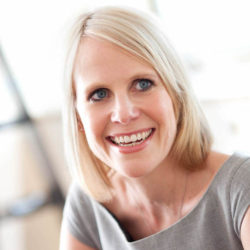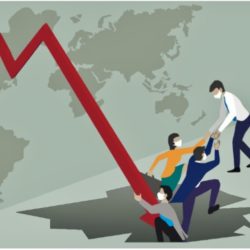Dirk Holbach: “We systematically identify high risk exposure”

Nine questions about the topics on the supply chain agenda of a supply chain professional.
By Helen Armstrong
Founded in 1876, Henkel has become a global company employing some 47,000 people. Its brands such as Persil, Schwarzkopf and Loctite have become leading names in households and industry around the world. Some years ago Henkel started to consolidate and, with a smaller workforce, supplier base and portfolio, its profits are increasing. It continues to optimise its structure as growth shifts from the mature into emerging markets. By 2016, Henkel aims to have sales worth €20 billion, of which 50% (currently 45%) will come from emerging markets. Headquartered in Düsseldorf, Germany, the company is organized into three business sectors: Laundry & Home Care; Beauty Care; and Adhesive Technologies. The company’s success story started with a product from Laundry & Home Care, the division in which Dirk Holbach leads global operations. He joined the company in 1997, firstly in purchasing, later in the supply chain and two and a half years ago he took up his current position. His division generates some 28% of company sales, last year worth €4,556 million euros. It was a record year and as the company continues to simplify processes and increase operational excellence, sales too continue to grow.
1. What is the strategy of the Company (or Division/Supply Chain): Product leadership, operational excellence or customer intimacy?
“As a branded goods company and certainly within the Laundry and Home Care division our clear aim is product leadership, especially through innovation. On one hand our entire supply chain has to bring innovation to the market fast: 42% of sales are generated from new products launched in the last three years. On the other hand we have to be efficient so we cannot neglect operational excellence. We have to be extremely streamlined and even if we compare our supply chain to the company’s other two divisions ours is rather simple. On top of that we cannot ignore customer intimacy otherwise we would not be successful in the marketplace.”
2. What is your responsibility regarding the supply chain?
“For the last two years I have been in charge of operations in our Laundry and Home care division on a global level. Therefore I’m responsible for anything to do with manufacturing in our 27 factories, which are spread all over the world from Korea to Mexico. I achieve this with a small and very good team of just 37 people. Most of them work for one of our factory clusters that we’ve set up in Dusseldorf, Moscow, Vienna, Dubai, Mexico City and in Scottsdale, Arizona. These hubs are aligned with planning and distribution with some offshoring of certain standardised tasks. We manage everything from engineering to new product introduction but also the day-to-day steering of the factories.”
3. What are the main business challenges that drive supply chain projects at the moment?
“We have reshaped our entire network over the last couple of years and it is now very efficient. Eight years ago we had more than 50 factories, now 27. Also, eight years ago the total head count in the supply chain was more than10,000. Now it’s around 6,000, so just over half the number of people with a totally different overhead structure but higher output volume. Also, we used to produce more than double the number of finished good articles than we have today. Now some 84% of sales in the Laundry & Home Care division are generated by 10 brands. This streamlining and optimisation of our structure, footprint and people is an on-going task. Our strategy is to produce articles where the people live so it is a very efficient system. We want to leverage the supply chain and two of the most important levers we can work with are our portfolio and our footprint. Another big topic for us is business growth and investment into capacity, especially in emerging markets which has implications on how we run the supply chain and organise our teams. As well as the organisation becoming leaner, we are gradually to centralising responsibility. For example, this is on-going in demand and supply planning. It used to be located within a country; now it has moved out of the plant, out of the country to one of our multi-country clusters. We are currently centralising our operations up to supply and planning in factories. In this way we can be consistent because scheduling and the day-to-day planning are run from one location. We have been able to accelerate this transition because we’d cleaned up our footprint beforehand.”
4. Which supply chain challenges keep you awake at night?
“Increasing volatility in upstream markets that affects supply security and supply reliability, which are linked to intelligent risk management. Every day anything can happen and it’s almost impossible to always have exactly the right fall back in place. That’s too expensive so you have to have trade-offs. Laundry & Home Care has a very strong footprint in North Africa and the last two and half years have been very challenging. We have factories in Syria, Lebanon, Saudi Arabia, Iran, Egypt, Tunisia and Algeria; 9 plants in total. We have a lot of contingency plans but at the end of the day the options are limited because our products are relatively inexpensive so you can’t build up capacity somewhere else to supply these markets. Transportation would be too expensive and so are the duties at the borders in this region. So we have to find a solution within each country which usually means working with inventories and distributors to provide a buffer so that we can manage these difficult periods. It has definitely been worth it. We have enjoyed tremendous growth – it’s incredible. We have to be there, especially during these turbulent times, as we have the opportunity to increase our market shares.”
5. What do you do about these challenges?
“We systematically go through our portfolio and identify the products with a high risk exposure. These are not always the most expensive ingredients but the ones that we use in large volumes. The most critical ones are those for which there is no substitute or if only one or two suppliers are available. If these conditions apply then we systematically work on reducing risk which may be to look for a substitute or working with a buffer in terms of inventory to win time if there is an issue. But clearly we cannot have back-up for everything. We are concentrating our production, and as we get bigger we have advantages of economies of scale for inventory. Also, as the warehouses are getting bigger we can automate, which really pays off in high-wage labour countries. We just built a €35 million warehouse to serve Germany and surrounding countries. It is fully automated – touchless – from production to a fully automated warehouse of 90,000 pallet places. This is much more efficient than having the same product at various locations. Each of our sites manufacturers on average 200-400 products and we make sure we have enough margin to move. The ultimate solution is to integrate all the co-packing. This is not only efficient but we can react very quickly.”
6. Who do you like to meet for exchange of knowledge?
“I enjoy meeting operations people from other industries, hearing about their challenges and solutions and sometimes adapting these to our situation. We have borrowed several ideas such as in-line bottle blowing from the carbonated soft drinks industry. It can be very fruitful. Typically I get the opportunity to meet these people at seminars, conferences and conventions.”
7. Which book has inspired you the most and why?
“Most recently I read “True North” by Bill George that deals with authentic leadership. Further to that spend my free time at home with my three young children and keeping myself physically in shape through running, cycling, swimming and rowing. I have to focus!”
8. Where do you expect to be professionally in 5 years time?
“I love operations so I see myself further evolving in this area, probably in the broader sense so the supply chain from end-to-end: Plan, source, manufacture, deliver. I started my career in strategic purchasing nearly 15 years ago and I’ve tried to complement my capabilities along the value chain since then. Last year our division had a record year and these first two quarters are significantly better than last year so we are continuing our success. We have set ambitious targets up to the end of 2016 and we are very confident that we will make it. We learned between 2008 and 2012 that it’s good to have a clear target and not to lose sight of it. It’s important to be consistent and not change your strategy every other day.”
9. What do you use for an agenda?
“Internally we use Lotus Notes (IBM) and I also use a Blackberry and iPad.”










